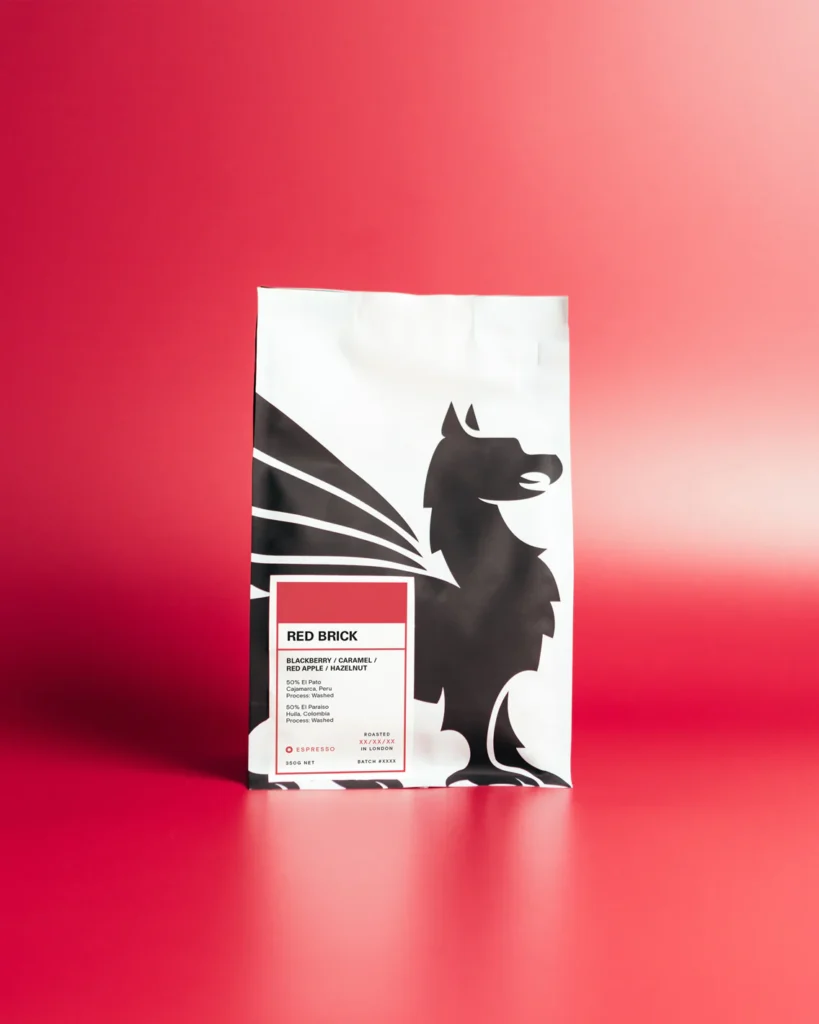Whether at home or behind the bar at a cafe, we always recommend using a recipe to brew your espresso to maintain quality and consistency with every drink served. For our Red Brick espresso, we offer a good starting point of 19g of ground coffee in with 38g of liquid coffee out in 28-32 seconds.
A question we get asked frequently is how and why we chose this recipe?
To answer this, we first have to look at how an espresso recipe is designed. Espresso recipes are built on brew ratios, which is the relationship between the dose (coffee in) and yield (coffee out). As you can see from our recommended recipe, we’re aiming for a brew ratio of 1:2 (19g in, 38g out).

This ratio has almost become an industry standard as it produces an espresso with an intensity and texture that most people enjoy drinking and desire in an espresso.
A shorter ratio of 1:1 (such as 19g in, 19g out) produces a ‘ristretto’ coffee – thick, rich and intense; maybe a little too intense for most! The high concentration of this style of shot can also impact flavour clarity as it can be difficult to pick out individual flavour notes in a liquid so intensely flavoured.
A ‘lungo’, on the other hand, is prepared with a 1:3 ratio (so, 19g in, 57g out), and this style of espresso may dilute flavours and thus lack the unctuous quality most espresso drinkers crave.

The standard 1:2 recipe is also what we use for our quality control process here at the roastery. Keeping this variable consistent allows us to have a clear sight of our goal – to achieve an espresso that is sweet, balanced, and clean with every roasted batch.
It is worth noting, however, that what we’ve said so far is specific to the bar set up we have here at the roastery. Different grinders, espresso machines, and water qualities may affect the recipe you need to use. For example, a grinder that has a higher fines production than the Victoria Arduino Mythos 1 we use here may have a lower ceiling for extraction and require a shorter extraction time or espresso yield to get the best results in the cup.
Finally, you need to ask yourself – how much espresso do I want to produce? This is especially relevant in a commercial environment, where small changes in an espresso recipe can add up to huge expense or savings over the course of a week, month, or year.

A 6oz latte with 40 grams of espresso in it may be much stronger than your customer’s typical expectations, and a 30g espresso in a 12oz cappuccino might lack a depth of flavour. We think that an espresso yield of 38g gives each drink on a typical coffee menu a good balance in the cup sizes commonly used in cafes.
As said previously, the recommendation is a great starting point when using Red Brick and it is just that – a starting point. A lot of fun is to be had dialling-in, adjusting variables, and chasing that elusive ”˜God shot’, and we really enjoy tasting the variation in what one blend can offer when out visiting the cafes we supply.




